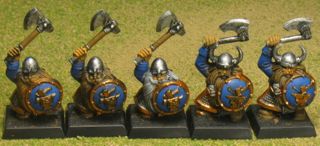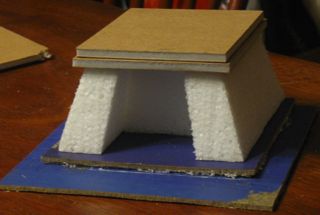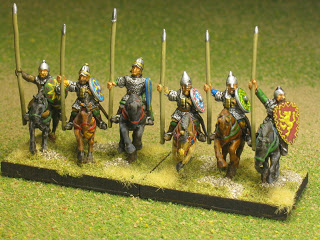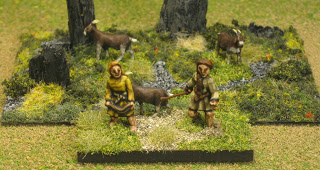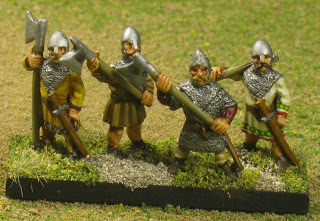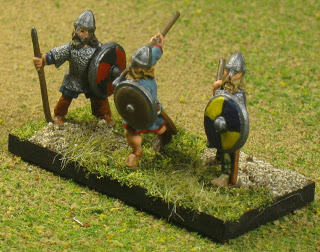I traded my Baueda Emishi army pack for a Post-Mongol Samurai army pack from Jeff Franz. I didn’t think I’d ever get around to painting the Samurai, but then the Stooges planned a Horde Wars event at Cold Wars 2012. Samurai were the only way I could get 4 elements of horde on one army, so I painted it quickly and brought it to the convention.
 |
| DBA IV/59: Post-Mongol Samurai; Essex Miniatures. |
The figures are by Essex Miniatures. The Essex Samurai range is quite odd, I’ve found. They sell Ashigaru and horde/peasant figures that are only appropriate for the later (Post-Mongol) periods, but their mounted and foot Samurai seem to be using early Samurai armor and equipment. I’m not that happy with the accuracy of the figures for this period, based on my limited knowledge.
The sculpting is also a bit of a mixed bag. The armor has small details that are finely carved, which makes it difficult to paint effectively using either highlighting or ink washes. Jeff traded these away because they were a pain in the butt to paint, and I see what he means.
 |
| 4 Hordes. Washed with Army Painter strong tone dip. |
I did a bit of a rush job on the painting, but the figures really didn’t inspire me very much. The greatest inspiration I had was to get better Samurai figures to paint a second army with. Unfortunately this would force me to paint a third army for BBDBA, because what can you do with only 2 armies?
 |
| 2x3Sp. These are Light Spear in DBA 2.2+. |
This army has three optional sections: 4x3Sp, 4x5Wb, or 4x7Hd. 15 figures for each of 4 stands? Ugh! That’s like 2 armies worth of figures right there. Luckily, Jeff had already painted the warbands, so I was off the hook for those. The only reason I was painting the army was to get the hordes, so I decided on a very basic color scheme and technique for these four elements. I just flat painted them using a limited palette, and dipped them all using Army Painter strong tone. It’s a very utilitarian look, with any variety and visual interest coming from the large number of guys rather than their paint job.
I painted the one mandatory 3Sp element, and one additional element that I primed along with it. I like the way the back flags look. The Triforce symbol was used by the Late Hōjō Clan in the 15-16th century long before it was used by Nintendo in the Legend of Zelda series.
 |
| Cavalry and Cavalry general. Essex miniatures. |
Although I like the way these flags look, I hate them! What a nuisance. They’re molded separately and need to be glued to the figures, with a tiny surface area for gluing and no room to add pins. Two of the flags came off before I even had a chance to photograph the elements, and two more fell off during the first tournament I used the elements in. Back flags are the one thing that would prevent me from getting a second PMS army, because an accurate later Samurai force would have far more flags than this army does.
 |
| 6x4Bd, Essex Miniatures. |
To paint the Samurai armor, I decided on another simple but somewhat effective technique. I flat painted the armor, added a few contrasting stripes on the lacing, and then used a thin, black ink (Didi’s Magic Ink) to darken the armor between the raised lacing pattern. Unfortunately, the carving is shallow enough that it didn’t work as well as I had hoped. It looks better than flat colors without shading, and it’s far easier than painting highlights, but it didn’t turn out as well as I think it would with more deeply carved figures. It’s good enough, but not great.
The cloth was all painted with brushed-on highlights. I didn’t use any patterns on the cloth except on one figure, though I expect technically there should be more.
This is not one of my better painted armies, but at least it’s not in the “unpainted” pile anymore. I still have 3x3Sp to paint, as well as a camp, but those will have to wait until I have another opportunity to play with the army again. Maybe next year at Cold Wars?
I really like the look of Samurai and their armies, but DBA just isn’t very nice to them. It’s a difficult army use out of its historical period.
